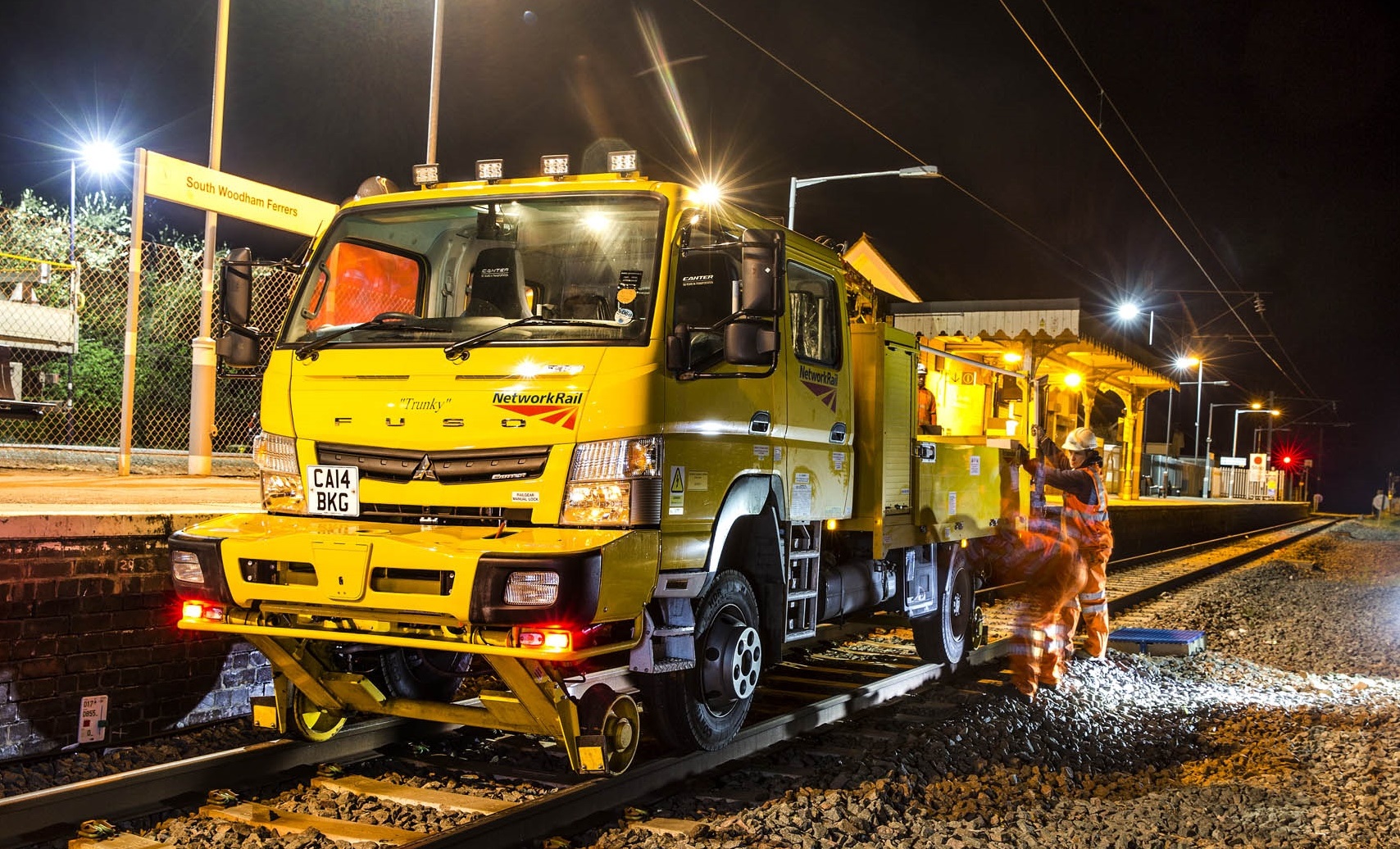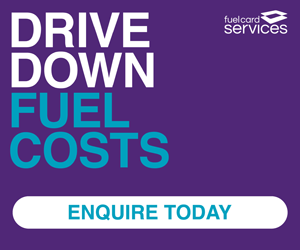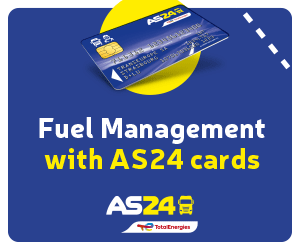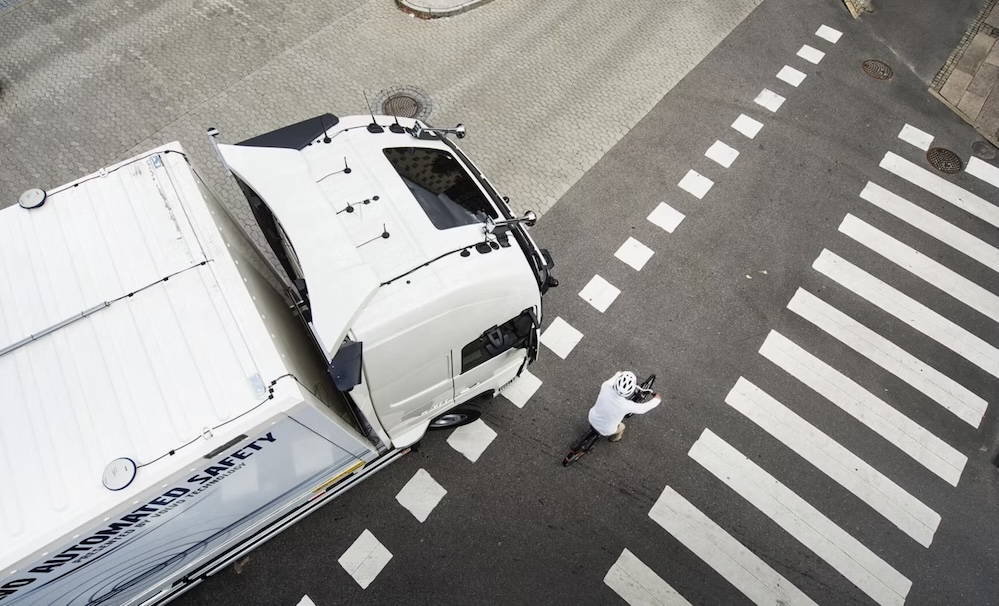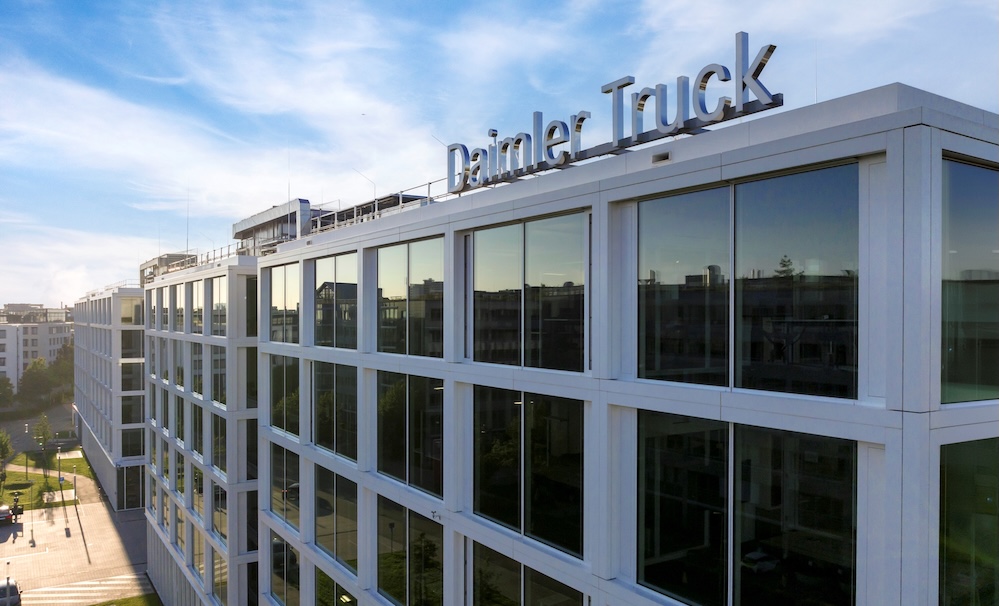Network Rail has commissioned a new fleet of 20 all-wheel drive FUSO Canter trucks specially adapted for operation on rails as well as on roads.
The 6.5-tonne chassis are fitted with additional sets of rail wheels at front and rear, which can be hydraulically raised for normal road operation or lowered to allow the vehicles to run on rail infrastructure.
The 4×4 Canter 6C18Ds have Double crew cabs and were supplied by South Wales Mercedes-Benz Dealer Euro Commercials – the German manufacturer’s franchised network also sells and supports the FUSO light truck range in Great Britain.
They were converted for their highly unusual role by rail industry specialist GOS Tool & Engineering, of Blaenavon, South Wales, and undertake a variety of maintenance duties. Six are fitted with dropside bodies and PM cranes used to lift sleepers, rails and bags of ballast, while the remaining 14 have box bodies housing welding equipment for rail repairs.
Their double-drive configuration and additional rail wheels give the Canters unparalleled flexibility. Network Rail’s operatives can drive to a level crossing – or RRAP (Road Rail Access Point) to use the industry terminology – then position their vehicle over the train track and deploy the wheels. The trucks can travel along the line to a work site.
Network Rail Project Manager Keith Ubah said: “At Network Rail safety is one of our top priorities and these crane vehicles significantly reduce the amount of manual handling of heavy items that for our maintenance crews, making life easier and safer. We’ll also benefit from increased efficiencies and reduced operating costs as they are doing a job that was previously assigned to separate road and rail vehicles.”
Network Rail has previously relied on a combination of standard road-going trucks and specialised railway vehicles – which were typically hired in under contract – to carry out maintenance work on tracks.
During a typical ‘possession’, when a maintenance crew has control of a section of the line for a set period of time, conventional trucks would deliver any required materials to the nearest RRAP, where they would be collected by the rail vehicle then transported to the work site, which could be some miles away.
The Canters, by contrast, can perform both roles. Not only does this make planning maintenance much easier, but it also reduces the amount of time required to carry out the work, thereby minimising the impact on scheduled train services.
“There’s scope for cost saving too,” continued Mr Ubah. “By deploying these Canters we will be able to start reducing the use of rented rail-only vehicles. The cranes also perform a very useful role in transporting valuable scrap metal, such as old lengths of rail, to access points where it can be removed. The savings, and the extra income generated mean the Canters should prove beneficial very quickly indeed.”
The Canter chassis began life as standard 4×4 6C18D models with 129 kW (175 hp) four-cylinder engines, before being heavily re-worked. Network Rail provided GOS Tool & Engineering with a comprehensive set of design criteria that the vehicles, and the supplier identified the FUSO light truck as the most suitable base vehicle available.
Neil Gregory, GOS Tool & Engineering Director, commented: “The Canter 4×4 is ideally suited to this conversion – it’s a low ride system, which means the road wheels sit on the rails, and the double drive gives plenty of traction. Also, although the truck has relatively compact dimensions there’s still plenty of space on its ladder chassis to accommodate all of the equipment and ancillaries.
“Mercedes-Benz UK and its Dealer Euro Commercials were very supportive throughout the design process; this has been a great example of close liaison between two suppliers to come up with a perfect product for a highly specialised application.”
Now entering service, the Canters are expected to quickly prove their capability for crews working on railway repairs. The range of tasks they undertake is also set to be extended still further – Network Rail is in the process of designing a series of rail trailers with which each truck will be able to work at a gross combination weight of 11 tonnes in rail mode.
Network Certification Body (NCB) Lead Assessment Engineer Olufemi Okeya added: “I anticipated that these vehicles would bring a range of very real benefits to Network Rail operations. So far NCB has certified that the six general purpose vehicles are compliant with the relevant engineering standards. The certification process involved working closely with GOS to develop a novel rail guidance and wheel-load monitoring systems. The acceptance work included development and witness testing, and reviewing the design proposals before the final sign-off.”
Network Rail owns and operates most of Britain’s rail network, including 20,000 miles of track and associated infrastructure, 32,000 bridges and tunnels, 18 major stations – more than half of all passenger journeys start or finish at one of them – and 2,500 other stations, which it leases to train operators.


